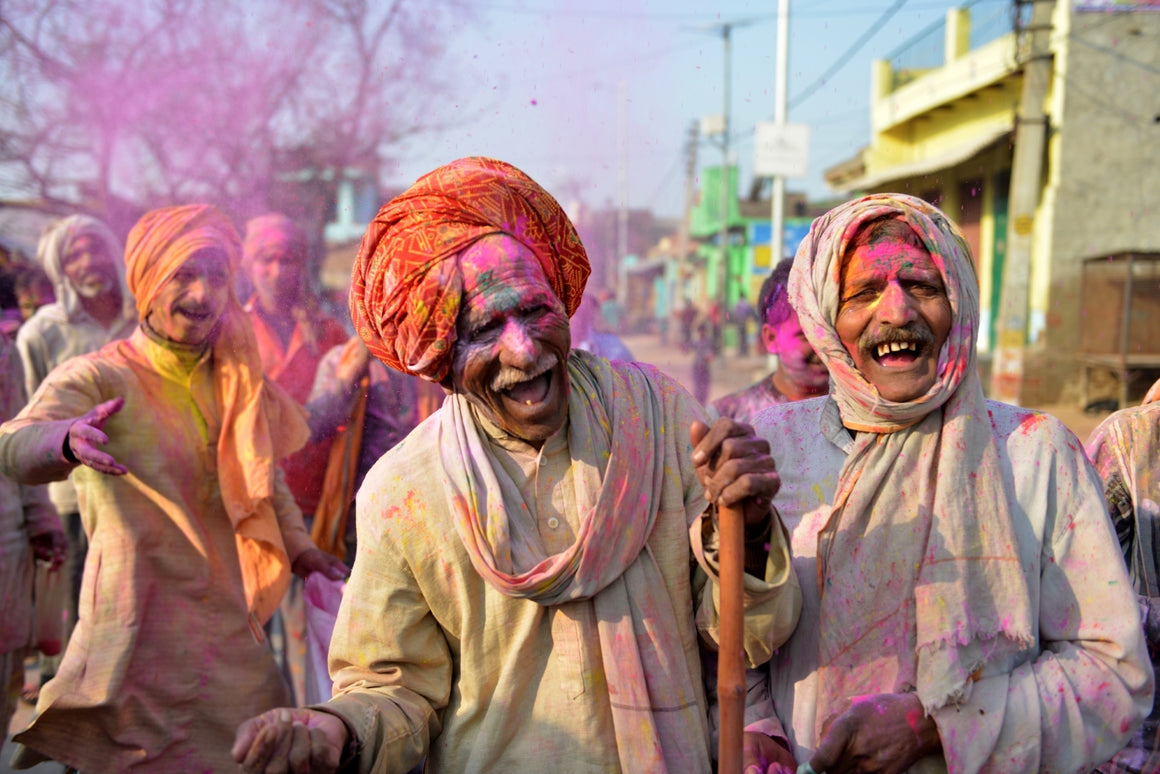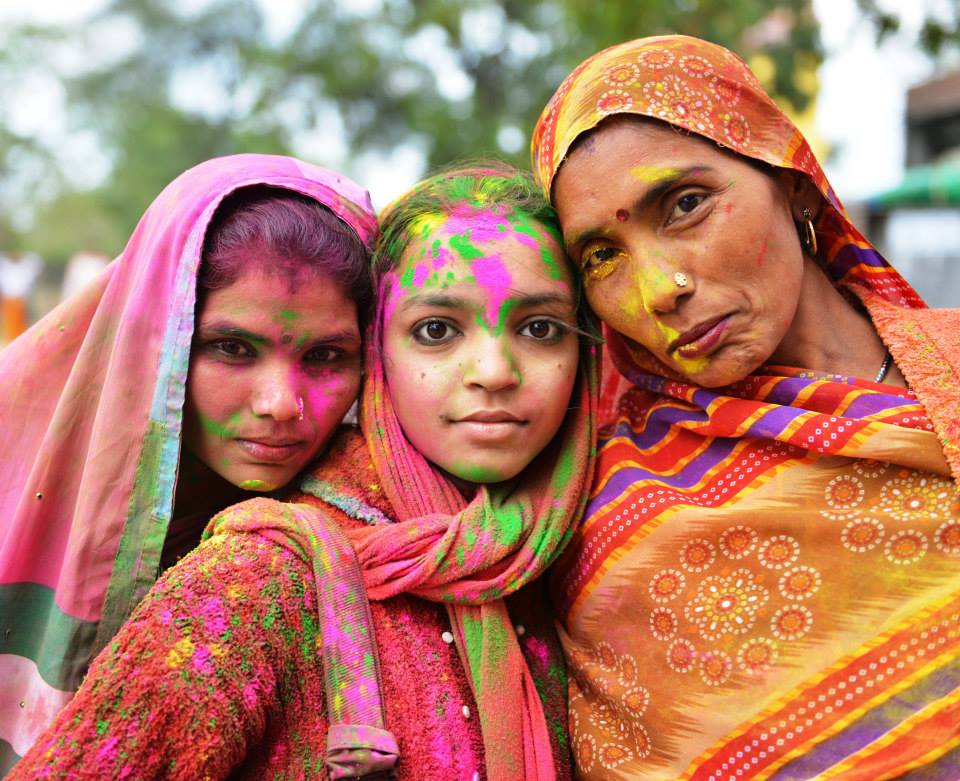Description:
Holi is celebrated at the end of the winter, on the last day of the month Phalgan, at which the full moon is visible. Phalgan in the Hindu calendar coincides to the period in between mid-February and mid-March. Festivities commence on the evening before the Holi day, with bonfires' rituals called Holika Dahan. A large crowd gather around the bonfires and embark on services, glorifying the burning of Holika, the source of evil, and hoping for the elimination of all evil as was done by Vishnu. In Braj county, of Uttar Pradesh state the almighty god according to Hinduism is Krishna. The source of Holi celebrations revolves around his image and his beloved, Radha. Krishna means in Sanskrit, dark blue and the legend tells us that as a baby he developed dark skin, caused by poisonous milk breast fed by his nursemaid, Putana. Since young age, Krishna rejected his dark skin and in a moment of revengeful anger, killed Putana. His main fear was that the light skin, Radha and her girlfriends will reject his courting. One day Krishna shared his frustration with his mother. How injustice nature can be, creating Radha so beautiful, light skin while he is dark and not attractive. To calm him down, Krishna's mother advised him to color Radha's face in a variety of colors that he desires. Equipped with a mischievous mood, Krishna visited Radha unexpectedly and smeared her face with intense colors, so that she would look like him. Over the years this legend evolved into a popular tradition, sweeping the whole country to a carnival of color spraying and water jet called Pichkaris, which symbolize the total eternal love of Krishna to Radha.
PRINTED CANVAS:

This photo was taken in a high iso and therefore it has a painting effect.






